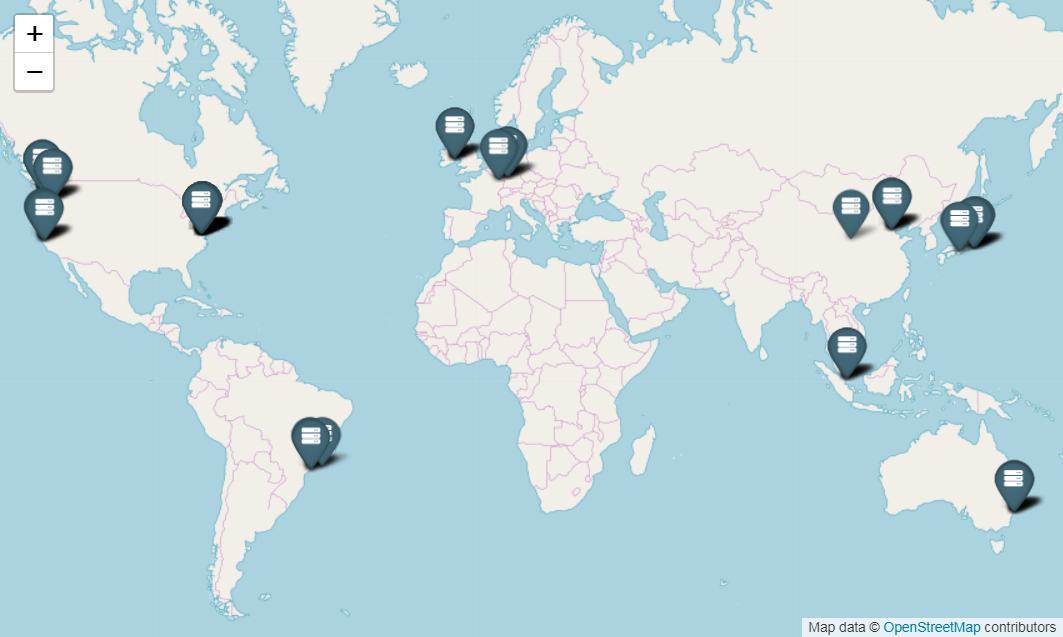Data Center Location: 6 Things to look when Choosing
Whether you’re only looking for half a cabinet or carefully laying down a cross-continental deployment strategy, choosing a data location is never a trivial task.
In fact, with most contracts signed for a pre-determined term, this is likely to be one of those make-or-break decisions that can either boost or cripple your business. Once the hardware is in place, relocating it is both complex and time-consuming. As a result, the implications of a wrong choice could stretch far further than the immediate loss on a bad investment. To help you avoid these bad decisions, we present a list of tips for choosing a data center, drawing on lessons learned through years of worldwide server deployments.
Data Center Location: Proximity
When choosing a data location, the first thing to think about is the proximity to your target audience. Geo-hosting at locations a long way from potential clients or partners may cause problems. It also makes a difference to the audience’s connection speed, potentially resulting in lengthy page load times when people are trying to access your site. The typical web user isn’t patient anymore, and they’ll look elsewhere rather than wait for pages to appear in their browser.
If you don’t already know where customers are based, it’s easy to find out where your audience is located using an analytics platform like Google Analytics. This generates reports devoted to telling you where site visitors are based, potentially helping to narrow down data center locations.

Security
Having a proper security system is critical when choosing a data center location. Because it houses all your enterprise data and applications, a breach could mean disaster for your business. The average cost of a cyber attack on data centers rounds out to $4 million.
Data centers should use software and technology that protect your assets, but they should also have strong physical security. Your center should have proper locks, surveillance, and depending on the size, even security personnel.
You should also verify that their security features and objectives don’t limit the scalability of your service.
Data Center Location: Redundancy
One of the main advantages of moving your data center to colocation is gaining redundancy. Your company needs to maintain high levels of availability and business continuity to earn the trust of clients and customers.
Any data location you choose should have redundant devices and connections within the network. Redundancy prevents any single point of failure that would lead to a shutdown. Multiple sources of power generation and delivery are also important.
Content delivery networks (CDNs)
Implementing CDNs might help to alleviate concerns about proximity issues. A CDN holds content that frequently needs to be delivered to users at different data centers around the world, speeding up the delivery of that content irrespective of where the users are. CDNs are often chosen by larger businesses that deal with dynamic content including images and videos as part of their products or services. They’re also a valid option for sites looking to reach a global audience.

The Reputation of Data Center Location Providers
Like you would with any purchase, do your research to find out what reputation the data center has. While no provider will be perfect, reading testimonials and feedback from other clients gives you insight into how the center handles issues.
Take your time evaluating the data centers on your list and don’t hesitate to call clients to get their impressions.
Managed service offerings
One way to get the maximum value out of a data center is through managed services. Data center managed services allow you to outsource routine tasks related to the management and maintenance of your data center.
Some of the managed services offerings to look for are managed security services, backup and disaster recovery services, and network monitoring. These managed services are typically affordable and can be offered as a package or a la carte.
Conclusion
By keeping the above factors in mind, your choice of data location should become clear. It’s possible to achieve a balance of proximity, risk, and security. This will ensure that your hosting is as reliable and effective as clients expect in today’s mature online environment.